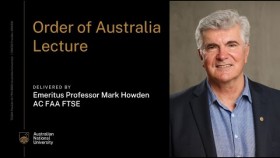ANU experts rebut renewable energy claims
Australia needs to focus on the main game of addressing climate change, and not be distracted by furphies surrounding the amount of renewable energy in the grid, according to experts from The Australian National University’s (ANU) Energy Change Institute.
Their comments follow the recent political attention focused on the power blackout in South Australia.
The Energy Change Institute’s Director Professor Ken Baldwin said all experts agree that the cause of the recent power outage had nothing to do with renewable energy, but rather the extreme weather event which took out transmission lines.
“The evidence also shows that restoring the grid was not delayed by the amount of renewables in the State, as once the Heywood interconnector to Victoria was up and running, wind farms were reconnected within the first half-hour trading interval,” Professor Baldwin said.
“This is the first ‘black start’ reconnection in response to a real emergency in the National Electricity Market in over 50 years, and would have occurred over a similar timeframe irrespective of the amount of renewables in the system.”
The level of state renewable energy targets was overnight called into question by federal politicians as a result of the South Australian blackout, but Professor Baldwin says the discussion is taking the focus off working together at all levels of government to meet overriding climate change obligations while ensuring a secure and affordable energy supply.
“What industry needs is an end to Federal Government policy uncertainty in order to make the crucial investments in energy generation that Australia requires in the coming decades – particularly to address climate change.
“Further policy confusion over renewable energy targets arising from myths about the South Australia extreme weather event will only make matters worse”, Professor Baldwin said.
Director of The ANU Climate Change Institute, Professor Mark Howden, said further increases in extreme weather events can be expected due to climate change.
“The increasing frequency of major, damaging climate-related extreme events being recorded by the insurance industry suggests that this is already happening,” he said.
Professor Howden said the recent intense low-pressure system with high winds and heavy rainfall are not unprecedented in the climate record, even though the system was unusual in its strength.
“The unusually strong high pressure blocking pattern experienced this September across Australia tends to encourage stronger north-south wind flows such as those experienced in South Australia. So it is not possible to attribute this specific event to climate change. However, climate change has strengthened the westerly flow of winds across southern Australia and this could pre-dispose us to these sort of events. Hence, we need to be paying much more attention to adapting to climate change so as to reduce climate risk.”
The Institute’s Dr Nerilie Abram said there was still a lot to learn about these types of extreme climate events and how they might change in a warming world.
“Regardless of whether this individual event was made more likely or not by climate change, that doesn’t alter the urgency to reduce our dependence on fossil fuels if we want to avoid severe impacts from human-caused climate change,” Dr Abram said.
Earlier this month funding was announced for a major new research initiative into extreme climate events. The new Centre of Excellence for Climate Extremes includes five partner universities, including the Australian National University, as well as CSIRO and the Bureau of Meteorology.
“This is a severe climate event that has wreaked havoc across South Australia. But if left unchecked, these impacts will be dwarfed by the sustained economic losses expected in Australia and elsewhere because of global warming,” Dr Abram said.










